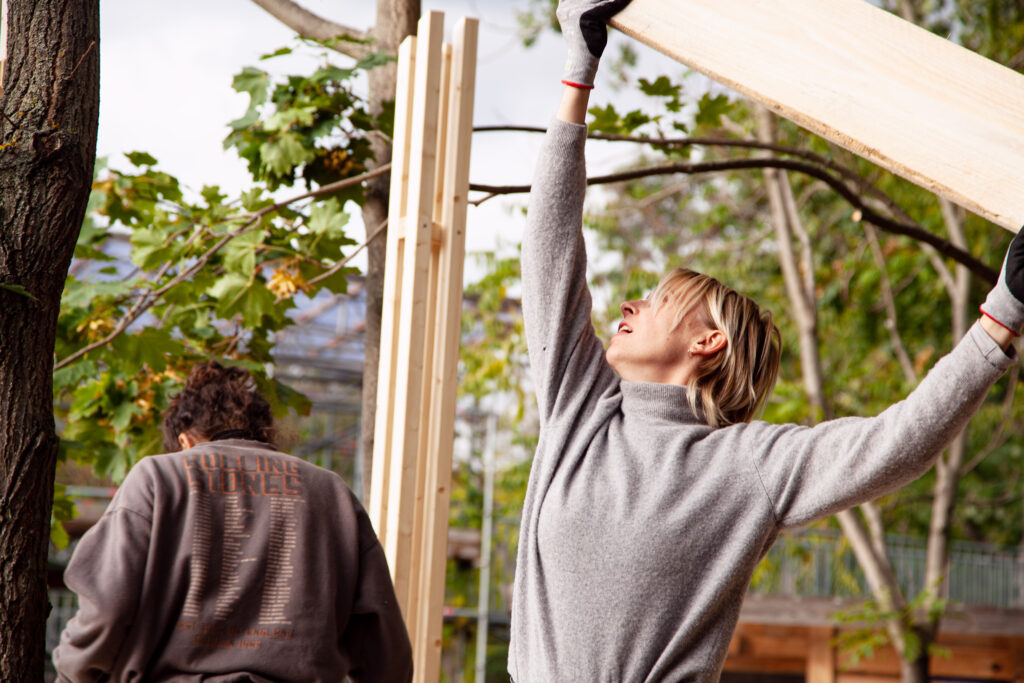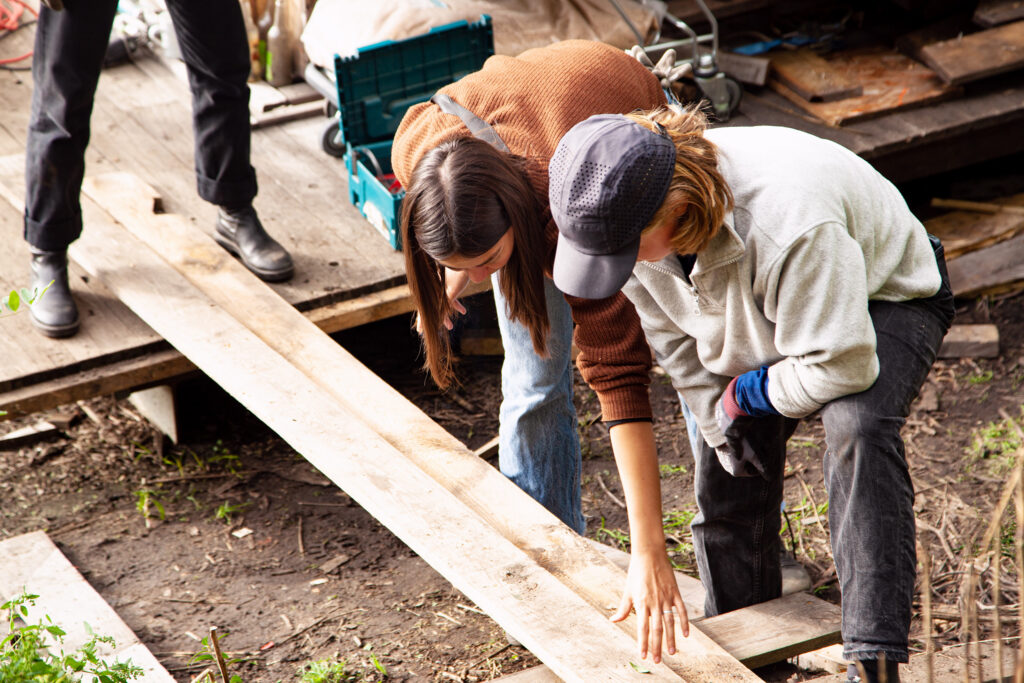Compostation
The floating compostation is a place where decay and renewal, the elementary processes of soil creation, are manifested into a common and joyful action and structure.
Within the light wooden structure different kinds of “rests” usually called “waste” are collected and stored, such as kitchen rests, fresh and dry garden cuttings, paper, woodchips. (all of them produced over a summer at Floating). Once every collection box is full, it means it is time to come together and compost ! The rests are carefully mixed and arranged in a 1m3 pile directly on the ground nearby to form a “hot compost” pile. This way microorganisms acting as composting agents can multiply and create soil within 3-6 months.
The primary structure of the station was built collectively during a 5 days workshop in which participants were encouraged to reflect about the necessity of creating soil, but also experiment and implement design ideas reacting to the specificity of the site and the future usage of the station.
The design of the compostation was a collective process organized by spätispäti collective and DIE BODEN SCHAFFT.
At Floating we believe composting can be a moment where we come together and fruitfully engage with the “left-overs” of the floating site. The compostation is making the different phases of hot composting visible, and therefore make it accessible to members of the associations and the site visitors.
In 2022, Floating eV conducted a compost analysis from the hot compost piles in 2021 and 2022. We found out that our self-made compost is less contaminated than the soils on site. Floating eV has been monitoring the water and soil contamination and the development of its ecosystem since 2021. This ongoing data collection helps us understand the effects of our actions on site.
The hot composting on site usually takes place from Mai-October: the months when Floating is open and the ongoing programs on site produce garden and food rests in important quantities.









